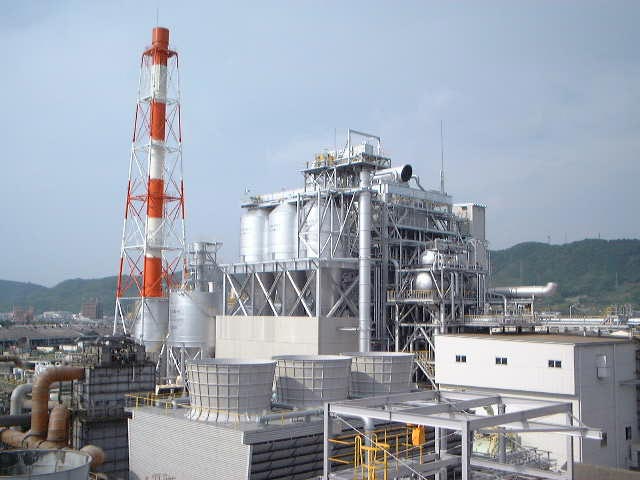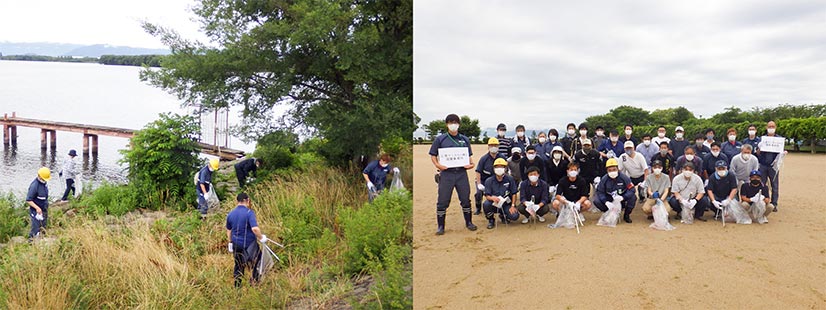Environmental Conservation
Mitsubishi Chemical Corporation
Basic Policy and Key Measures
Aiming to contribute to the global environment, Mitsubishi Chemical (MCC) proactively works to reduce its greenhouse gas emissions, conserve resources and energy, prevent contamination of the air, water and soil, limit waste generation, encourage reuse and recycling, engage in activities and develop technologies that help conserve the natural environment, and develop and produce environmentally friendly products. In these ways, MCC strives to reduce its environmental burden at every level of its business activities.
In addition, to ensure legal compliance, we carry out training on environmental laws and regulations, conduct environmental audits and hold twice annual liaison meetings at which MCC Group managers in charge of environmental issues exchange the latest information about legal amendments and other issues.
- ■ Reducing Environmental Risk
- We establish mechanisms for environmental management and work to identify environmental risks and reduce them. We provide regular training on environmental laws and regulations, conduct environmental audits, and endeavor to maintain and improve the level of environmental management.
- ■ Reducing Environmental Impact
- We are working to reduce our environmental impact through such means as cutting greenhouse gas emissions, conserving resources and energy, and reducing emissions of environmental pollutants and waste.
- ■ Coexisting Harmoniously with Local Communities
- We are letting local communities know about our environmental conservation initiatives and promoting harmonious coexistence through communication.
Addressing Climate Change
MCC is working to cut its greenhouse gas emissions in line with the targets set by Mitsubishi Chemical Group Corporation (MCG) of reducing greenhouse gas emissions 29% by fiscal 2030 (compared to fiscal 2019) and achieving net zero carbon neutrality (CN) by 2050.
Focus: Reducing GHG Emissions Using Biomass Fuel at the Hiroshima Plant
The on-site power generation facilities of MCC’s Hiroshima Plant use coal-fired boilers to produce and supply electricity and steam. These boilers previously accounted for approximately 90% of the plant’s CO2 emissions. To reduce this significant environmental burden, we have been using wood chips in mixed combustion of biomass fuel to help reduce CO2 emissions since 2008. Going forward, we aim to further increase the co-firing rate and thereby enhance the CO2 reduction effect.
Balancing CO2 emission reduction with fuel cost, we will continue to work as one to realize KAITEKI using environmentally friendly technologies.

Life Cycle Assessment
Life cycle assessment is an approach that enables the quantitative evaluation of the environmental burden generated by a product or service over its entire life cycle (from resource collection through raw material production, product manufacturing, distribution, consumption, disposal and recycling) or at specific stages of said life cycle. The evaluation of the environmental impact of MCC’s products and services over their entire life cycles better enables the company to develop environmentally friendly products and services and provide them to society.
Preventing Air, Water and Soil Pollution
MCC handles a wide range of chemical substances and therefore maintains ongoing measures to reduce emissions of hazardous air pollutants and of pollutants into public bodies of water through such means as installing and improving emission gas and wastewater treatment facilities.
We have been reducing or maintaining at a steady level the environmental burden our businesses place on atmospheric and water quality, as measured by NOX, SOX and dust emissions as well as chemical oxygen demand (COD). MCC’s emissions of PRTR-regulated substances*1 and VOCs*2 have also been declining.
- *1Pollutant Release and Transfer Register (PRTR):
A system for filing notifications of the amounts of chemical substances released and transferred. This system enables the identification, aggregation and publishing of data on the types, sources and amounts of hazardous chemical substances that have been released into the environment or transferred outside facilities as waste. - *2Volatile organic compound (VOC):
Typical substances include toluene and xylene. These compounds became subject to regulation by the amended Air Pollution Control Act of 2006 as source substances of photochemical oxidants (photochemical smog).
Focus: Environmental Conservation Initiatives at the Shiga Plant
MCC’s Shiga Plant uses a great volume of plastic pellets as raw materials. The plant takes steps to prevent these pellets from spilling into public waterways, such as setting up pellet-catching nets in rainwater drainage channels.
In addition, every year, the Shiga Plant takes part in a day of mass-cleanup activities around Lake Biwa and Lake Yogo coordinated by Nagahama City and a Nagahama beautification group, working to conserve the environment in the local area. We will continue to implement initiatives to protect the environment and the area’s natural beauty.

Waste Reduction and Recycling
MCC is advancing 3R activities (reduce, reuse, recycle) in an effort to reduce its waste. Going forward, we will continue working to improve our waste recycling rate by strictly enforcing sorted collection and strengthening coordination with disposal contractors.
Biodiversity Conservation
Based on the
Mitsubishi Chemical Group Biodiversity Preservation Policy
, MCC pursues initiatives that contribute to the global environment and thus conserve biodiversity. Through these initiatives, we work to reduce environmental risk and impact and thereby lessen our business activities’ impact on biodiversity. In addition, we strive to conserve the natural environment by cleaning up neighboring areas and coastal areas and protecting our plants’ green areas.
Environmental Accounting
MCC uses environmental accounting, based on the Ministry of the Environment’s guidelines, to better understand the costs and effects of its environmental burden reduction and conservation efforts.
